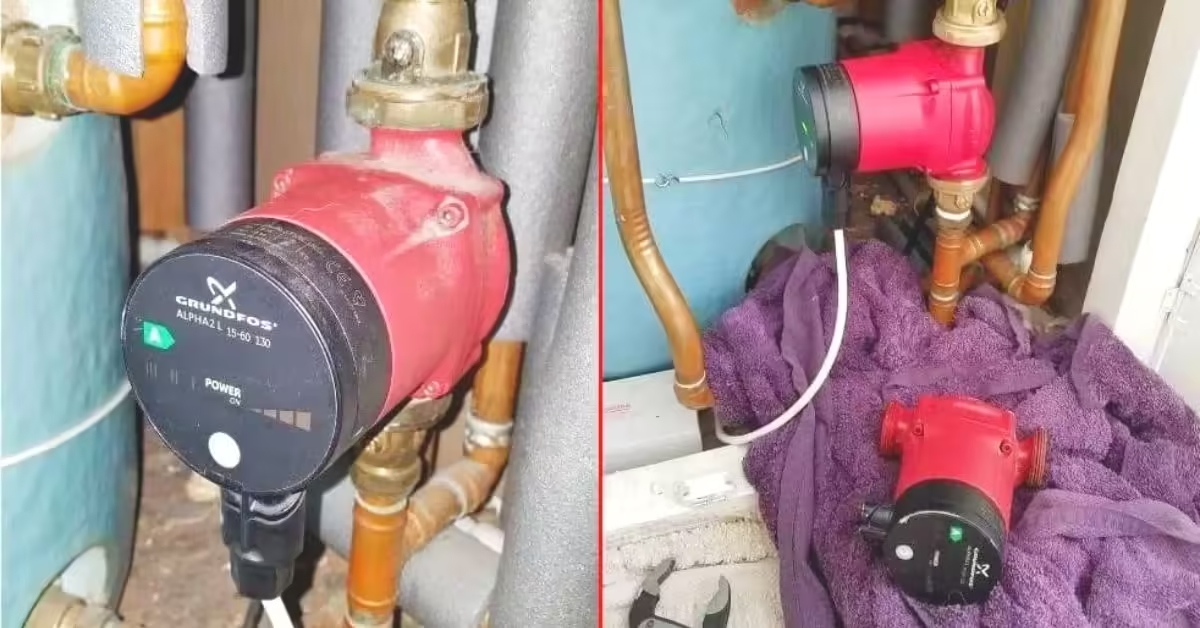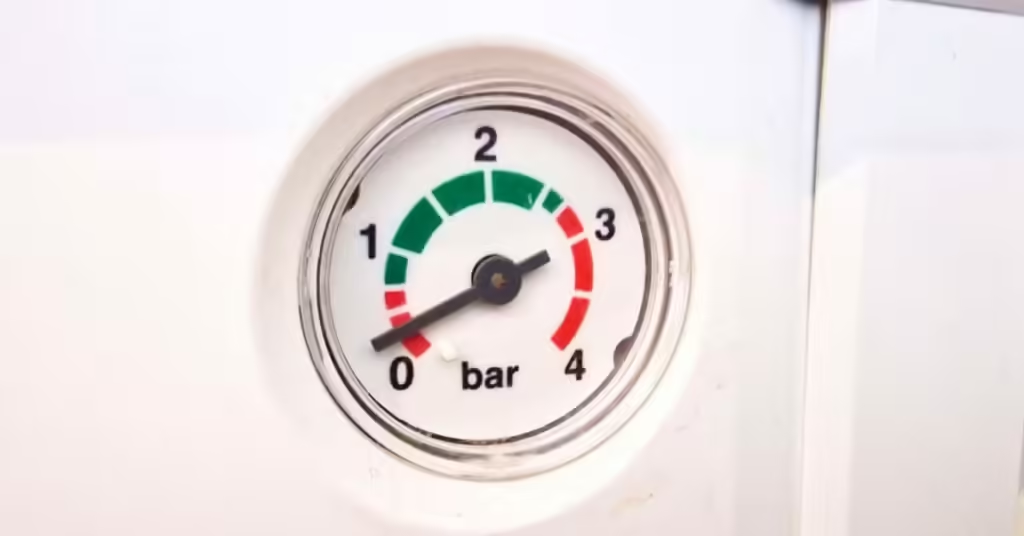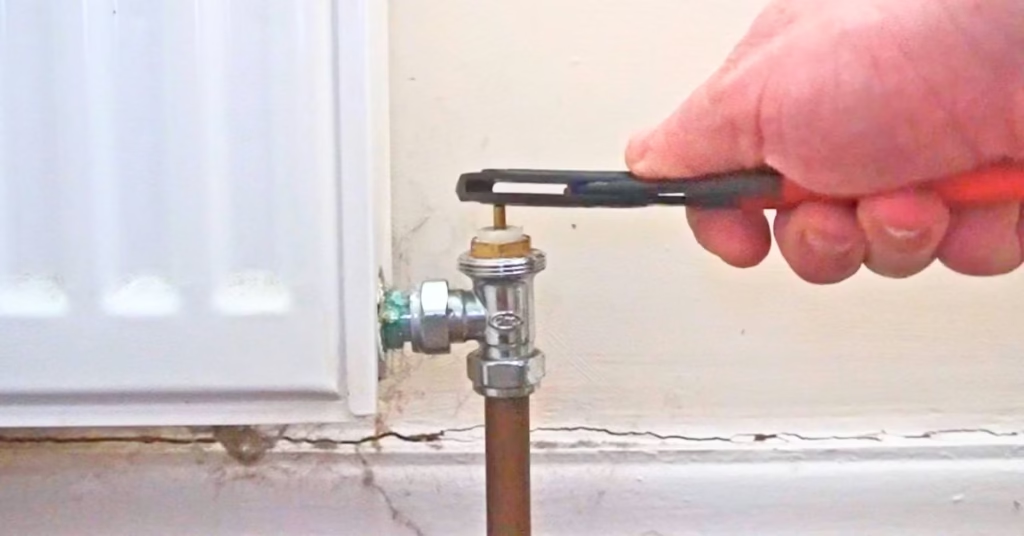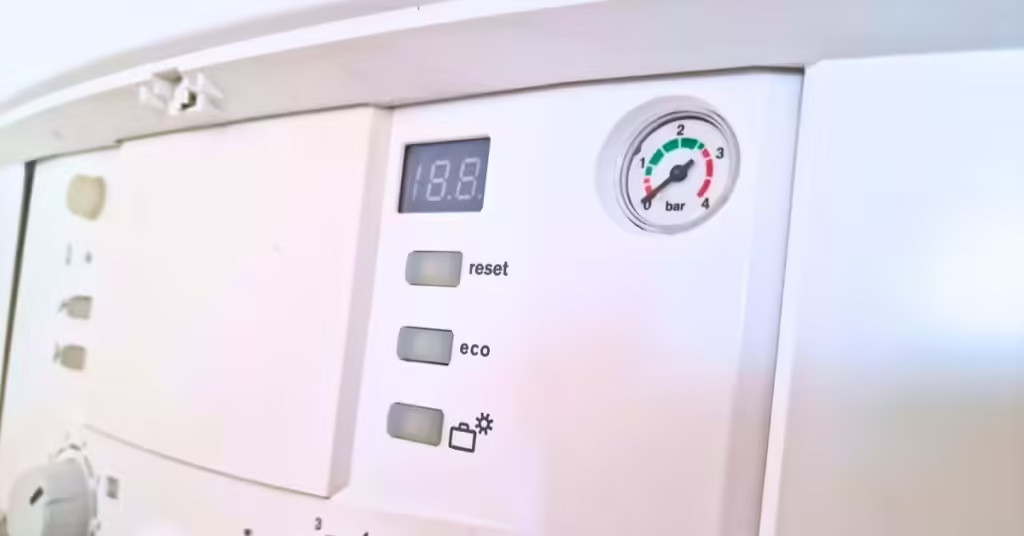Last updated on March 2nd, 2025
A central heating pump is the beating heart of a central heating system which pumps the heated water around all the radiators and the hot water cylinder from the boiler. If your pump stops working, your boiler and central heating system will stop.
I have been fitting and fixing central heating systems for over a decade and have come across all sorts. Here I’ll show you how to replace a central heating pump based on my experience.
How to replace a central heating pump
Replacing a central heating pump is quite an easy job for a plumber. That is if the pump valves are working and don’t start leaking when you close them for the first time in years. If you’re replacing a pump for the first time it can be quite intimidating, especially if you haven’t done any plumbing before.
Here’s how to replace a central heating pump:
- Isolate the electrical supply to the heating system
- Trace the cable from the pump back to where it is connected and remove the 3 wires (unless it has a plug on the pump)
- Close the two pump valves on either side of the pump with a screwdriver or your hand or water pump pliers depending on which type of valves
- Put an old towel under the pump to catch any water
- Use some large water pump pliers or pump spanners to turn the two largest nuts on either side of the pump (this can be very difficult sometimes and you might need two people and some WD40)
- Remove the pump
- Refit the new pump in between the two pump valves with new washers and tighten up the two nuts
- Open the pump valves
- Bleed the pump using a large flathead screwdriver by turning the bleed screw in the centre of the pump anti-clockwise until some water comes out
- Connect the three cable wires to the same place where the old ones were
- Check for leaks and turn the power on then turn on the heating to make sure it’s working
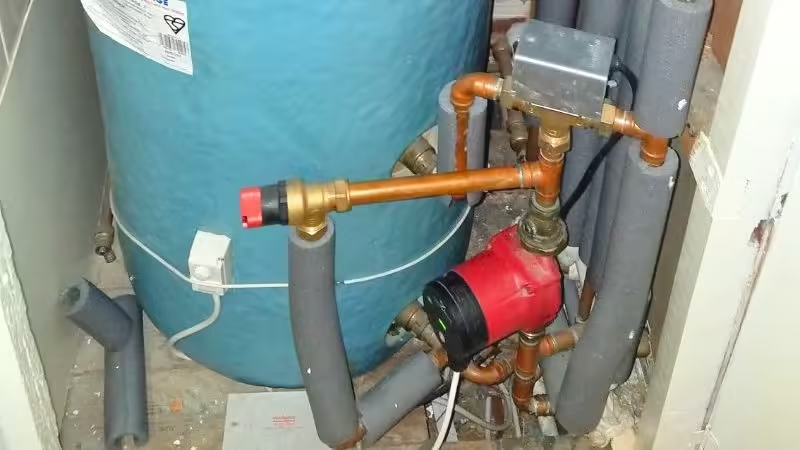
Replacing pump valves
Replacing the central heating pump isolation valves is a lot more complicated. If you are replacing the pump and you close the pump valves, more often than not the pump valves will leak because they haven’t been used for years or decades.
This means you will have to replace the pump valves. You should make sure you use the same length valves as the ones you are replacing as there are a few different styles and sizes.
Here’s how to replace central heating pump isolation valves:
- Empty the heating system
- Isolate the electrical supply to the heating system
- Trace the cable from the pump back to where it is connected and remove the 3 wires
- Put an old towel under the pump to catch any water
- Use an adjustable spanner to undo the two smaller brass nuts on the pump valves that are touching the copper pipe
- You can leave the big nuts connected to the pump if you are replacing the pump as well
- Remove the pump and valves
- Connect the two new valves to the new pump using the new washers and tighten up the large nuts
- Place the pump and valves in place and tighten the nuts on each end
- Connect the three cable wires to the same place where the old ones were
- Refill the system
- Bleed the pump using a large flathead screwdriver by turning the bleed screw in the centre of the pump anti-clockwise until some water comes out
- Check for leaks and turn the power on then turn on the heating to make sure it’s working
How to bleed the pump
To bleed a central heating pump you need to unscrew the screw in the centre of the pump with a large flathead screwdriver. You should turn the screw anti-clockwise and let the air out until water starts coming out.
Conclusion
Replacing a central heating pump is quite a difficult task if you haven’t done it before. Calling a heating engineer might be the best option if you haven’t done any plumbing before.
There are quite a few problems that can arise when draining and refilling heating systems which can be a real headache even for experienced heating engineers.
If you have to replace the pump valves also, it might be best to leave it to the experts but if it’s just the pump and you feel competent, go for it.
Feel free to ask any questions in the comments below, and I’ll do my best to help. If you found this post helpful, please consider sharing it.
FAQs
How long should a central heating pump last?
A central heating pump typically lasts 10 to 15 years with proper maintenance. However, its lifespan can vary depending on factors such as water quality, system usage, and the overall condition of the heating system. To extend the life of your pump, ensure that the system is regularly serviced, any sludge or debris in the system is cleaned, and the pump is properly sized for the heating system. If the pump is showing signs of wear, such as noisy operation, inconsistent heating, or frequent breakdowns, it may be time to consider replacing it.
Where is my central heating pump?
Your central heating pump will be inside the boiler on a combi boiler and system boiler. If you have a conventional heat-only boiler the central heating pump is usually next to the boiler or in the hot water cylinder (tank) cupboard.
If you are struggling to find the pump it could be almost anywhere on your central heating system. I have found them under floorboards and behind walls in bathrooms.
Where is the bleed screw on a central heating pump?
The bleed screw on a central heating pump is in the centre of the pump. Usually a large circular piece of steel with a large crease across it for a flat screwdriver.
Do you have to drain the system to change the pump?
No you do not have to drain the system to change the pump. But, if the pump valves fail to hold the water when they are closed (or they start leaking) you will have to drain the system to change the pump and pump valves.
